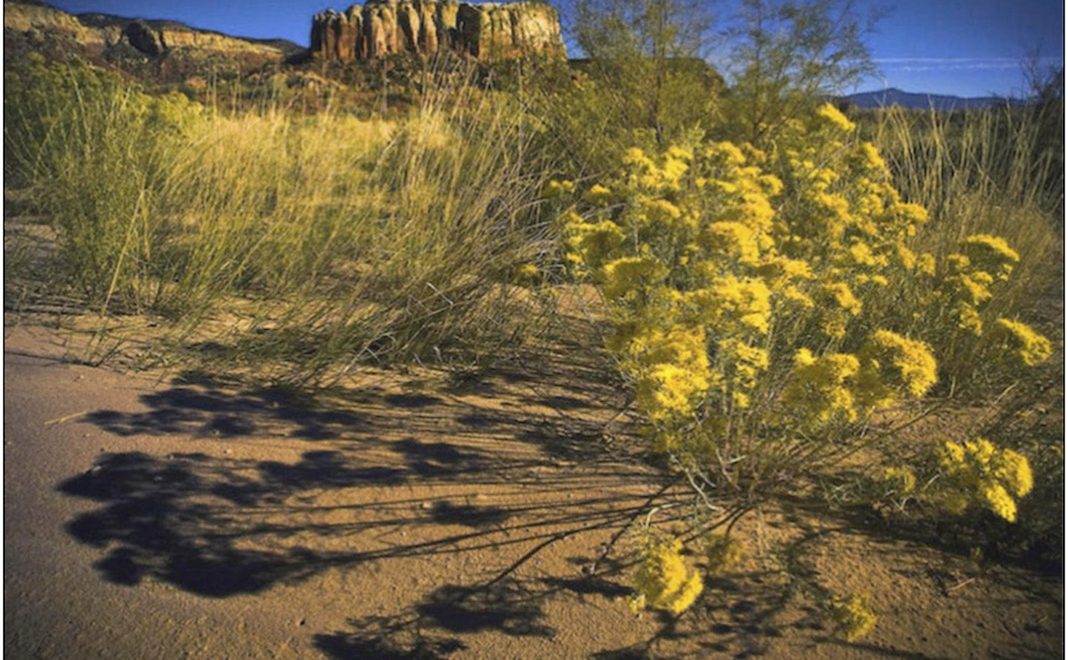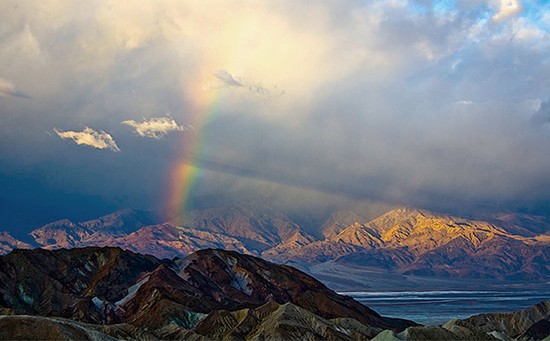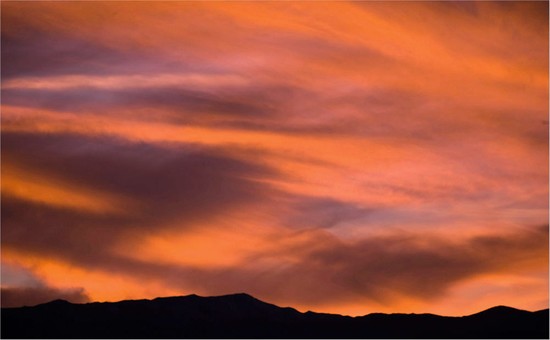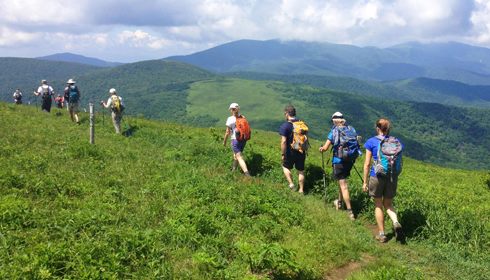LEAVES AND CONTEMPLATION

By Linda Martinson
October 2007. I was attending a Digital Fine Print Workflow class taught by George DeWolfe at Santa Fe Workshops. It was an outstanding class: instruction, content and classmates. George led us through an elegant workflow that created a closed loop from capture to print and produced excellent and consistent prints. The workflow was based on Lightroom and Photoshop CS3 and was simple, powerful and replicable. George has an artist’s eye for arresting photographic images and a master craftsman’s eye for detail and precision. We were delighted with our week’s work and final prints.
Throughout the course, George referred often to his contemplative approach to photography aimed at a clear visual expression of reality, conceptual interpretations unnecessary, where a calm and aware mind unites with the primary elements of human vision. As George explained it, contemplation is about mindfulness; paying attention, in the present moment, to where you are and what you are seeing and thereby noticing things that cannot be accessed by language.
George was offering a Contemplative Photography workshop four months later in Death Valley and I decided to attend. So, I was paying attention on the last day when George mentioned an exercise he offers as a challenge to his students – an assignment only five people have completed. The exercise is to pick a theme, a thing, a person or a place and to take 30 photographs of your chosen subject every day for three months. If you miss a day, you must start over. There were no other instructions; in fact, George said we could leave the images on our computers unexamined if we wished.
There were no reactions or questions from the class, although George added that completing this assignment would definitely make anyone a better photographer. I was intrigued, but surprised that only five people had met the challenge. It sounded like such a straightforward and simple assignment. I was recently retired from a long and busy administrative career. Taking 30 photographs a day seemed like a snap (well, 30 snaps) and, if it would improve my photography as much as George said it would, why not try it?
It took me a few weeks to decide what subject to choose. I would be traveling a lot during the next three months and, of course, there was the annual stress test and wind tunnel effect of the holiday season. Finally I chose leaves – I could photograph them both in Atlanta and everywhere else I would travel, too.
So I started and, I confess, I began the challenge as if it were an administrative chore I had to check off my to-do list. Day one, done; day two, done; day 3, done, for about 10 days. It took me that long to realize that I had not been thinking about leaves or even photography; I had just been taking 30 photographs as a chore to complete every day. This thought hit me about the same time I began to notice leaves everywhere. I began to think about what I was doing and to be more intentional about where I would photograph; I had moved into my location phase.
I began to plan my daily shoots: one place to photograph yellow leaves, another place for red leaves – my neighbor suggested a park that had “big leaves” – I scheduled a trip there. I also signed up for a day of macro photography at the Atlanta Botanical Garden. Mixed results there, I had never liked using a tripod and in the middle of the shoot I knocked it over and cracked my macro lens; the leaves were gorgeous, however. After the first hour, the instructor said, “Don’t just look at the flowers, check out the leaves, too.” Flowers, what flowers! Although the images I captured that day were fine, none of them seemed to reflect the excitement I felt when I saw those amazing leaves.
After that shoot, I joined the botanical garden; my husband gave me a new macro lens for Christmas and I began photographing at the botanical garden once or twice a week with my tripod and new lens. I was moving into my technical phase. I started experimenting with perspective, checking my exposure, adjusting my aperture and shutter speed frequently, varying my ISO, trying different lenses, bracketing my exposures, changing my metering, and using my tripod more frequently. I also took my camera everywhere. My technical phase had its exhilarating moments and I began to feel one with my camera. It also overlapped with my “I am one with leaves” phase.
About halfway through the second month, I woke up to leaves: their color, their shape, how well placed they are and how they move in light and air. I noticed how dead leaves propped themselves on their pointy tips to catch the wind. Their negative space became vivid to me: their variety and strength and resilience, their flow, form and lifecycle. I noticed how often leaves are represented in paintings and drawings, on plates and pottery, on mantels and even doors. I realized how necessary they are, how they coexisted with everything – I understood how little I really knew about leaves. Leaves filled me with gratitude for their existence. Around this time, a friend asked me why I was doing this assignment in the dead of winter when there were no leaves around. No leaves? They were omnipresent, even in Ohio when I traveled there in January. Leaves were so wonderful; they spoke to me with what Henry Bugbee, the philosopher, referred to as, “…a final word in the soul, the meaning of coming to be and passing away, perennial, always and always, ever so, just as now.” I could take 50 shots a day and continue this assignment for the rest of my life!
Then suddenly, I began to struggle with the assignment. Even though I had fallen in love with leaves and taken 30 photographs a day faithfully for almost two months, nothing had happened. Occasionally, one shot was very good but none of the images seemed to reflect the wonder I was seeing. Nothing was really happening and I felt like I couldn’t go on. My husband consoled me: “It’s your own private obsession – no one will fault you if you stop.” My young daughter offered to help. One day I just couldn’t make myself go out to photograph, but late in the evening I went down to take 30 screen shots of leaf images from the computer. This was my “just do it” phase which reminded me very much of training for a marathon race. It was damn hard.
Three weeks to go. I traveled to North Carolina twice and I went to Orlando for a soccer tournament (not many leaves in the Magic Kingdom but everywhere at Gatorland.) The refrigerator broke, the washer gave out and our furnace stopped working. Our 21-year-old cat became sick and died. My laptop crashed and had to be replaced just before my trip to Death Valley (I also lost a week of leaves downloads.)
Thankfully, I had moved into my acceptance phase. Okay, perhaps I wouldn’t take any great photographs of leaves but I could enjoy them and I would take 30 photographs a day. I would simply go out every day and walk around watching leaves and taking the best photographs I could at the moment. Life was so crazy that taking my 30 photographs daily became meditative and therapeutic. The leaves were there in the eternal present and, by photographing them daily, I was there, too. It was early spring in Atlanta and new leaves were popping out – I took photographs of the birth and death of leaves, the finality and renewal of life
Three days to go. I caught an early morning connecting flight to Las Vegas. There were no leaves in either the San Jose or Las Vegas airports. It was raining when I arrived in Las Vegas and the traffic was terrible. It was getting late as I drove to the friends’ house where I was staying for the night. I pulled out my camera and took shots out the window whenever the traffic slowed. What different trees and leaves from Atlanta! One tree in particular had bright green leaves and, when I stopped at a red light, I took a few photos of it against the darkening sky. As the traffic began moving, a flock of black ravens flew down on the tree. One moment, the tree was brilliant green and the next, punctuated with large shiny black birds. It took my breath away and I looked around at the bumper-to-bumper cars on the four- lane highway. Had anyone else seen that magical moment?
Death Valley. George and his partner Lydia were duly impressed that I had completed the assignment. I felt a little like Natalie Goldberg described she had (in Writing Down the Bones) when she completed a challenge from her Zen master to come to the center to meditate every morning at 4 am for several weeks. On the last morning, she had turned to her master and said gleefully, “Well, you won’t be seeing me for a while.” However, I resisted telling George that I wouldn’t be taking 30 photographs of anything daily for three months anytime soon because Ms Goldberg had also written that her Zen master had deflated her pride at completing the challenge by saying simply, “Then I feel sorry for you.”
We talked for a few minutes about how my reactions and phases were similar to theirs while they were completing the challenge. George said what really mattered was that I showed enough determination to be a dedicated photographer for three months. Nothing else could be expected. Ah yes, acceptance.

Death Valley was lovely that week and the workshop was valuable and great fun. It was easy to finish my assignment; leaves are true heroes in the desert. The rain over the weekend had resulted in a dramatic show of wildflowers. At our first dawn shoot, a rainbow appeared over Zabriskie Point and held the pose for several minutes. I noticed that I was waiting more before shooting, just watching. The next evening, at a dusk shoot at the sand dunes, there was a spectacular sunset with glorious orange and navy swirls. Again, I noticed I was watching as well as shooting, looking for particularly dramatic swirls. I was also curious about the subtle parts of the sunset and that curiosity produced one of my most successful shots that week.

George and Lydia were coaching us in mindfulness. Was I more mindful because I completed the leaves assignment? It didn’t really matter because mindfulness is a moment-to-moment experience, but I also noticed that I felt more patient when the shoots were difficult; the weather cold and windy; the light, flat and bright – or when we could not travel to one location.
We heard thought-provoking lectures about contemplative photography including how we see; depth cues; shape and change; lessons in perception and expanded tonal range from Asian art and from famous western paintings; form as motion and motion as form. We were given several visual koans: questions posed from the outside world to be addressed (but never fully answered) in our photographs: for example, The Unknown Color, The Moment Before, Awakening, Seeing the Wind and Luminosity. Was I more contemplative during the week than I would have been if I hadn’t completed the leaves assignment? That sounded like another visual koan: Leaves and Contemplation.
There was a moment though, and a photograph that adequately expressed what I was seeing and how I felt, a moment when my eyes and heart and the image came together. For the last early morning shoot, we went to the sand dunes to photograph at sunrise. What a glorious morning – I was walking alone on the ridge of a sand dune with the sun just peeping over the eastern mountain range. I had just noticed the beautiful shape of a small bush ahead of me and marveled again at the tenacity of the plants that grow in the sand of the desert when suddenly the sun rose higher and the bush burst into flames. It was gleaming, shining, glowing in the dim light casting a flickering light along the sand. I ran over, set up my tripod, checked my camera and took several shots hoping to capture something that represented the magic of that few minutes. And I did.
And so I wandered for 30 shots a day for three months into the desert to bear witness to a burning bush. I was aware, I was open to wonder, and I was able to capture a vision that, for a few minutes, was a final word in my soul. It was a contemplative photograph.
“Thus the meaning of a final word is universal; it is uniquely spoken, or not at all; and it is never said once and for all. For the meaning of reality is not independent of the life of the will. In this life we all move from day to day. The more faithfully we do so, the more ours is an eternal present….” Henry Bugbee “The Inward Morning” pp 11-12, 1958.







37 comments